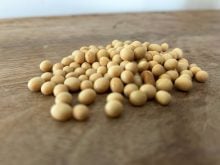LETHBRIDGE (Reuters) — Spring wheat yields measured less than half of last year’s results in drought-stricken southeastern Alberta but were on track to set a record high in southern Manitoba during a Canadian crop tour that saw the results of wildly contrasting weather.
The tour organized by CWB Market Research Services, formerly the Canadian Wheat Board, is travelling on three routes across Alberta, Saskatchewan and Manitoba until tomorrow. Some areas have suffered the driest conditions in decades.
Canada is the world’s largest canola exporter and producer and expected to be the third-biggest wheat-exporting country in 2015-16, according to the U.S. Department of Agriculture.
Read Also

U.S. corn and soybean yields revised down by USDA
Soybean and corn yields in the United States were revised downward from earlier estimates in updated supply/demand tables from the United States Department of Agriculture released Nov. 14.
Yields averaged 23 bushels per acre in an area stretching from north of Calgary to Lethbridge, well short of the previous year’s 50 bu., CWB weather and crop specialist Bruce Burnett said in a report late yesterday.
Further east in Manitoba, where rain has been adequate, spring wheat was in “excellent shape” and yields averaged 69 bu. per acre, close to a record for the route through southern Manitoba to Brandon.
Canola fields also looked impressive there, Burnett said, in contrast to the small, late-developing fields in Alberta.
In Saskatchewan, the biggest wheat- and canola-growing province, crops looked better than expected from Saskatoon to Melfort, Prince Albert and Lloydminster, Burnett said.
Wheat averaged 52 bu. per acre, similar to last year, and canola yields also looked in line with 2014.
Reuters is traveling on the CWB tour route through southeastern Alberta and southwestern and south-central Saskatchewan. That area last year produced about one-fifth of Canada’s spring wheat, two-thirds of durum and about 17 percent of canola, according to Statistics Canada data.
Today, scouts on that tour will travel through southeastern Alberta and southwestern Saskatchewan, which is known for its durum production.
CWB will estimate western Canadian yields of canola, spring wheat and durum tomorrow.














